Membrane for a geyser: purpose, principle of operation + replacement instructions
Geysers are reliable water heaters, however, like other devices, they have wearing parts. Therefore, there are times when the water ceases to heat up. If the reason for this is a leaky membrane for a gas column, then it is not necessary to invite a master for repair. You can do the replacement yourself, agree? But what is needed for this and where to start?
In this article, we will examine in detail the process of replacing the membrane and the features of repair work for different generations of columns. But first, let's get acquainted with the device of the water block, which has to be dismantled and disassembled in order to get to the membrane. We will provide replacement instructions with pictorial photos, useful recommendations and videos with an example of replacing the diaphragm of various speakers.
The content of the article:
- Purpose and structure of the water unit
- Reasons for the failure of the diaphragm
- Membrane fault detection
- Choosing a membrane to replace
- Detailed replacement instructions
- Replacing the membrane of an old type column
- Features of membrane replacement in new models
- Can I do with a diaphragm repair?
- Conclusions and useful video on the topic
Purpose and structure of the water unit
The membrane is an important detail in the regulation of gas supply. To understand its purpose and principle of operation, it is necessary to study in detail the device of the column water block, the structural element of which it is. This knowledge will help when replacing the membrane, because in order to get to it, you have to dismantle the entire assembly and disassemble it.
We also recommend that you familiarize yourself with the general gas column deviceto make it easier to find a water block in her design. But first things first.
Water reducer device
One of the nodes of almost any gas heat exchanger is a water reducer (water unit - WU, water regulator). It is designed to regulate the uniform supply of water and gas.The practically developed form of the regulator (in common parlance - “frogs”) contributes to the compact placement of the block in the column body. Technically simple device works automatically.
The functions of the gearbox are as follows:
- starting and stopping the gas column when opening / closing the tap;
- regulation of water and gas supply;
- column protection against overheating in case of insufficient water pressure.
The design of the gearbox is well thought out and visually not complicated. The case is made of brass, polyamide (containing fiberglass), silumin or plastic.
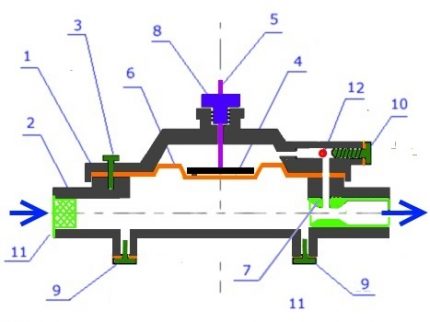
Principle of operation and value of the regulator
The hollow cavity of the gearbox, divided in two by the membrane, is filled with water. Water enters the cavity from the water supply. From the bottom, passing through the fittingVenturi, it enters the upper compartment through the bypass hole. However, the water coming from the water supply to the lower part always presses on the membrane with the force of water pressure in the pipeline, and in the upper part the pressure force changes, depending on whether the water flows through the heat exchanger.
The fact is that in pipelines having narrowed sections, the pressure of the flowing fluid in a bottleneck decreases. When opening the tap and passing water through the nozzle Venturi, the pressure before the local restriction (nozzle) of the fitting rises.
Due to the increase in the flow velocity in a narrow place, the pressure decreases both in the fitting and in the upper cavity of the frog. This is similar to flattening the end of the watering hose. With a difference in nozzle nozzle diameters (0.3 cm) and the main chamber (2 cm), the pressure drop reaches 1 atmosphere. This is enough for the membrane to bend up and press on a plastic plate firmly fixed to the axis of the rod. The rod presses the gas valve with force, causing the valve to open and gas to the gas burner.
When lifting the membrane, water from the upper compartment begins to flow out through bypass the channel where the steel moderator ball is located. The ball, moving to the right, partially blocks the channel, so the inclusion and supply of gas to the burner is smooth. Smoothness is adjusted using the adjusting screw.
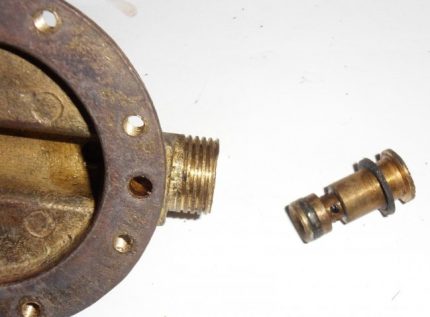
When the hot water tap (DHW) is closed, the flow of water stops and the pressure in the nozzle Venturi compares with the pressure in the cavity under the membrane. Due to the action of the springs, the rod together with the plate are displaced downward, and the membrane returns to the middle position.
The gas valve closes automatically. The gas valve is switched off quickly, since the ball moves to the upper cavity (to the left) by the reverse flow of water in the culvert channel and ceases to impede fluid flow. We recommend that you see information on what to do if gas valve does not work.
If the flow rate of hot water is less than 2-3 l / min, the required pressure drop does not occur, and the springs do not allow the stem to open the gas valve at all or enough to fully heat the water. Also, the necessary pressure difference does not arise in case of violation of the integrity of the membrane.
Water regulator based on nozzle principleVenturi, is a safety device, because it allows you to turn on the water heater only when a sufficient flow of water flows through the heat exchanger. Thus, the gearbox automatically protects the gas column from overheating.
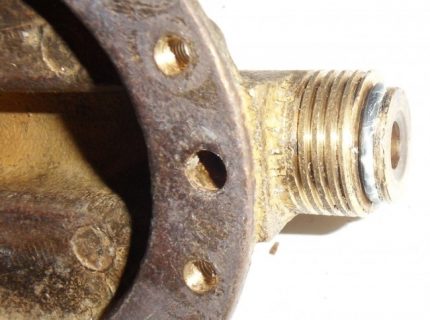
Reasons for the failure of the diaphragm
Membranes are consumables with a life of 5-8 years (average). The elasticity of the material decreases over time. As a result of the action of alternating stresses, each material working on bending causes fatigue over time - the formation and accumulation of damage. If the membranes operate in an enhanced mode, when the gas column is often and used a lot, fatigue occurs earlier. Microcracks appear in the diaphragm body, then breakouts are formed.
Rapid wear of the diaphragm also contributes to the scum that forms inside the frog. Another reason is the use of diaphragms for clandestine production. Often, such products are made of low-quality rubber.
Therefore, information on how to properly replace the membrane in a household gas column, if it fails, it will be most welcome. With such knowledge, you can fix the water knot on your own, without involving specialists for this.
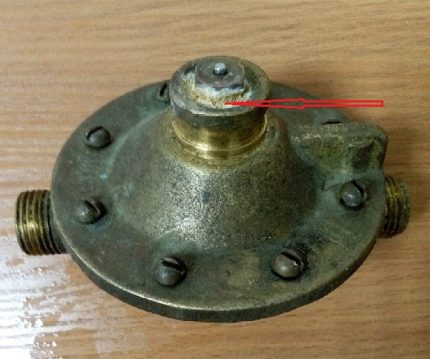
Membrane fault detection
The operation of the gas column may deteriorate gradually or cease instantly. Not always the malfunction lies in the wear of the rubber heart of the water block. Sometimes the reason is extraneous. Therefore, before proceeding with a screwdriver or a key to the inside of the unit, it is more rational to diagnose it.
Diagnosis of the reason for the automatic shutdown of the column
The failure of the column can occur for various reasons. Therefore, when a malfunction is detected, the columns should not be immediately taken for dismantling and disassembling the water unit.
The speaker automatically shuts off in the following cases:
- there is no draft in the chimney;
- the heat exchanger overheats;
- the flame above the gas burner does not light;
- the membrane does not work properly.
Other reasons for the attenuation of the column, we cited in following material.
In modern household heat exchangers equipped with digital displays, the main control board displays an error code in numbers on the screen. He will tell the master what to check first.
In older devices this is not. For the average user, the error code will say little. Therefore, one should be guided in the search for the cause of the breakdown by a method that has been tested by practice - the method of verification and exclusion.
Checking the correct connection of communications
So, first you need to make sure that there is water in the house’s water supply network, the gas at the inlet is not shut off, the valves supplying water and gas to the column are open in operating mode, and the batteries are not empty.
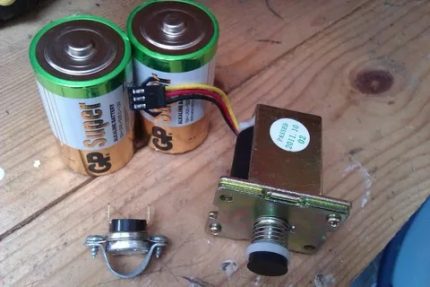
That is, you need to find out if the column hasn’t been disconnected for reasons independent of its performance.
- Check the water pressure in the water supply, and in the chimney - the presence of natural draft. To enable the membrane to work, the water flow should be at least 2-3 liters per minute. On the causes of weak pressure we talked here.
- Strip the contacts of the power compartment, replace the batteries.
- Imported units are sensitive to how the phase is located in outlets. Turn over the position of the plug in the outlet.
- Check fuses.
- If a sump is installed on the cold water inlet pipe, check if the filter is clogged. You should also check the mesh installed on the tap of the mixer. Clean if contaminated.
- Check for sparks on the ignition electrodes while the hot water mixer is on. In units with a closed chamber, the clicking of discharges is heard from the outside.The presence of a spark means that the membrane is triggered.
After making sure that the causes of the failure of the HA are hidden inside the system, proceed to further diagnosis.
How does membrane malfunction manifest itself?
In some GC models, the stem, including the column, is led above the body, therefore, the movement of the stem can be observed. If the stem does not move or does not extend fully, then the membrane and plate should be checked for integrity. In some models, the movement of the rod can be seen when removing the casing.
If, after cleaning the filter screen, the gas burner does not work, and only lights up when the hot water tap is fully opened or several of these taps connected to the gas cylinder are opened at the same time, it will be necessary to replace the old diaphragm of the gas column with a new one.
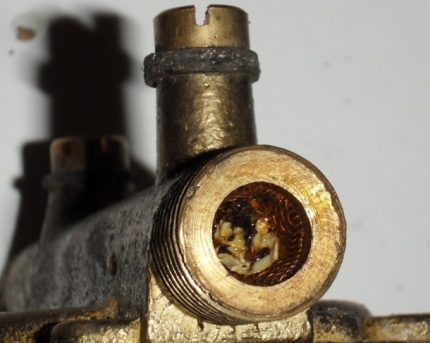
During normal operation of the membrane, the flames rise by 3-5 cm and are located exactly above the edges of the burner. Otherwise, especially if the cleaning of the nozzle did not help (if the ignition is carried out from the wick), the leaky diaphragm may be the culprit. It is the most probable reason, if during the firing up of the column from the batteries characteristic clicks are not heard.
A red high flame may be a signal that the gas is inappropriate. If the blue flame, burning sluggishly, gives first hot, then rapidly cooling water, then we have yet another symptom of a “membrane ailment”.
The gearbox must also be disassembled if water leaks from the water block. This malfunction can be caused by scale, wear of the gasket on the screw bush of the rod, failure of the membrane itself or the plastic parts of the combined membrane.
Choosing a membrane to replace
The diaphragms are made of elastic material - black rubber, or silicone. They can be solid or composite, for example, the product may berubber- metal or come complete with plastic parts. Most often, the diaphragms have a simple round shape. But there are models of gas columns, the gearbox membranes of which differ in a complex, “bizarre” configuration.
You are lucky if the column is domestic, and “native” membranes are on sale. Even more fortunate if the required part is made of silicone, which means it will last longer (about 10 years). But it is also likely that it will be necessary to acquire a "native" diaphragm through dealers, an online store. Perhaps you have to get full repair kit or a new frog. It all depends on the model of the gas heat exchanger - not all gearboxes have the same operating principle.
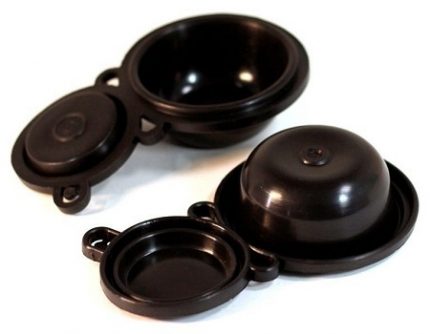
European companies produce water heaters with membranes, the shape of which is difficult to fake. In the worst case, if spare parts for “foreign cars” are not supplied, you will have to buy a new column or invent and craft something from the means at hand. There are universal apertures that suit a large number of models.
If you have to expect when a membrane suitable for the column is sent, and the diaphragm of the column does not have a complex configuration, you can make the part yourself for temporary replacement. Suitable rubber is 1.5-2 mm thick, for example, from thick dielectric gloves or an old car camera.
Using an old product as a template, a new gasket is cut out. The holes for the bypass channel and the screws are made with a thin-walled metal tube punch. The diameters of the bypass opening of the lid and the diaphragm should be equal so that water flow between the frog cavities is not impeded.
Detailed replacement instructions
Next, we will consider how to properly replace the diaphragm. But before starting work, it is important to remember that working with gas equipment belongs to the high hazard class. Therefore, a column must be repaired by a qualified technician.
You should not overestimate your skills and strengths - if in doubt, you need to contact the gas service. It is also necessary to contact gas specialists if there is a smell of gas in the room, because when ignoring safety measures the column may explode.
Stage # 1 - preparatory work
First of all, the flow of gas and cold water to the column is blocked. Gas must be turned off before starting work, even if it is not planned to inspect the gas part of the equipment. The water unit is connected to the gas, "hitting" which can get big trouble.
Water is drained from the system, for which a tap is opened, into which hot water flows from the column. If several hot water taps are connected to it, open the one located below the unit. Then the maximum amount of water will merge from the system. To drain the remaining water, a basin is placed under the water regulator.
The fact that the membrane for replacement must be purchased ahead of time can not be mentioned. It is also better to purchase gaskets for sealing the stem and union nuts of both nozzles. Can purchase full repair kit.
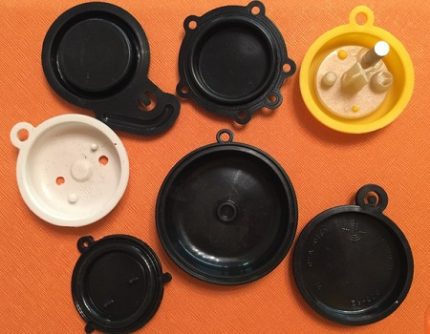
Tools are prepared for work: screwdrivers, wrenches or gas keys, pliers. Fine sandpaper may come in handy. It is also worth stocking up with rags, a means for dissolving rust (frog screws often turn sour).
To open access to the water node, open the body of the column. It is usually not difficult to remove the casing, - locate and unscrew the fastening screws for a short time.
It is also not difficult to find a water regulator - this is the first block on the way of cold water entering the column.
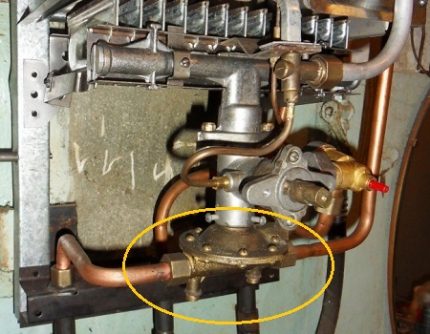
Step # 2 - Step by Step Description of Membrane Replacement
An idea of the process of replacing a worn membrane in a gas column can be made using the Neva domestic flow-through heat exchanger as an example.

Next, consider the process of dismantling the water node:
- Armed with a key, we first unscrew the union nut of the inlet pipe on the left side of the gearbox. We take away the tube so as not to interfere with further actions.
- Holding the frog by hand, unscrew the nut of the outlet pipe. Let it drain water.
- Using a screwdriver, unscrew the three screws connecting the water and gas blocks. It is not necessary to completely unscrew the fasteners; it is enough to free the stem. Remove the gearbox.
Now we turn out screws of fastening of a cover and the basis of the block (8 screws). If the bolts are sour, use WD-40. We open the cavity of the block, remove the damaged membrane.
We inspect the condition of removable parts - plates, rod and bushings, filter mesh, fitting. If necessary, we clear the cavity and other surfaces of the frog and its parts from scale or rust. We replace unsuitable ones or install old parts in appropriate places.
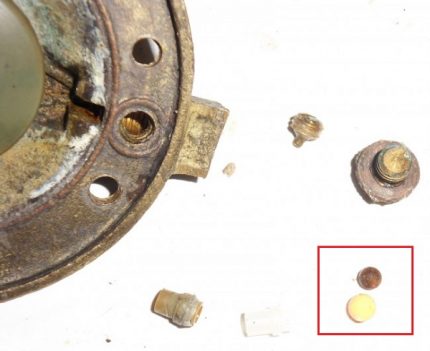
We install the membrane, not forgetting to precisely align the hole of the rubber part with the hole of the bypass channel. If the channel is blocked, then no water will enter the upper cavity.The pressure of the water on the gasket from below will keep it in a curved position, the gas will be opened by the rod even when there is no water flow.
We return the cover to its place, install and fasten the mounting screws crosswise (one against the other). After making sure that everything was done correctly, tighten all the screws in the same sequence.
Then we install the assembled unit:
- Mount the gearbox in the reverse order. It is advisable to put new half-inch diameter gaskets on the nozzles.
- We check the quality of the connection by opening the hot water tap. If leakage is not observed with the tap open, close the water and check for leaks under pressure. Then turn on the gas supply. After applying a soap solution to the gas connections, we check for gas leaks.
- If no leaks are detected, we check the column in all operating modes.
After making sure that everything is done correctly, the column works, we mount the removed housing cover.

Stage # 3 - clean up the entire water block
So that it doesn’t happen that you replaced the gasket of the gearbox, and after a few days you will need to disassemble the water heater to eliminate another malfunction, it is more rational to linger and do preventive maintenance.
While the gearbox is removed, in addition to replacing the diaphragm, you need to check the ease of stroke of the stem. The rods of the water and gas nodes interact.
Due to leaks, the gearbox stem may become scaled or sour. It must be cleaned, polished with sandpaper with a grain fineness of 240, greased with mineral oil, for example, lithol. The stroke must be smooth and easy.

Also check the nozzle for cleanliness. Venturi (fitting). Even a little pollution greatly affects the functioning of the frog. You can clean the fitting with a thin wooden stick. It may be necessary to replace the o-rings on the venturi.
Then it is advisable to check the following items:
- Check the operation of the magnetic switch button. If the button is operational, and the burner does not ignite due to a lack of gas supply, the reason may lie in the tongue of the switch. It can be slightly tightened to ensure a snug fit.
- Replace the unfit filter mesh or install a new one if it was not there before.
A routine inspection of the water unit should be done at least once a year. As well as not to forget about cleaning and regular maintenance all structural elements of the gas column.
Replacing the membrane of an old type column
In the technique of stagnation does not exist, the design of modern gas water heaters and old columns (Gva, L,VPA) are different. Therefore, there are nuances in replacing the gasket. The following description is given forOIG-56.
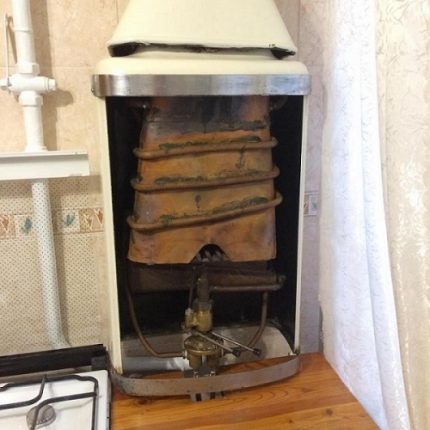
To replace a worn or extended diaphragm, a series of actions are performed sequentially in the KGI-56:
- Unscrewing the nut, remove the burner located above the gas block, set aside.
- Dismantle the gas block by disconnecting it from the gas pipe and loosening the three screws that connect it to the water block. Unscrewing the union nut, the gas block is held by hand.
- Unscrew the bolts securing the water block housing cover. Remove the cover.
- Replace the worn part, insert the screws (to facilitate subsequent screwing), install the gearbox cover in place. The screws first bait, doing this pairwise-opposite, then tighten in the same order.
- Mount the gas block, then the burner.
Be sure to substitute the basin, because when dismantling the gearbox cover, water will flow.
Features of membrane replacement in new models
The water nodes of modern speakers work on the same principle. The main differences between the new designs of instantaneous water heaters are saturation with control units, control units, touch screens, wires.
Some fasteners have changed. For example, now the screws are tightened and unscrewed with special screwdrivers with an asterisk. Innovations also affected the shape of frogs, and their connection with the gas block.

On thebranded columns Bosch and Junkers water node is located at the bottom right. To remove it, you need punite the terminal of the traction sensor located in front of the control unit.
Having shut off the water supply to the column and opening the hot water tap, use a screwdriver to remove the bracket that presses the pipe going from the WU to the heat exchanger. Having pulled the pipe slightly to the right of the water unit, they wait until the water from the system spills through the tap, after which the pipe is completely discharged. After that, the nut that secures the water block to the water supply is turned off with a key.
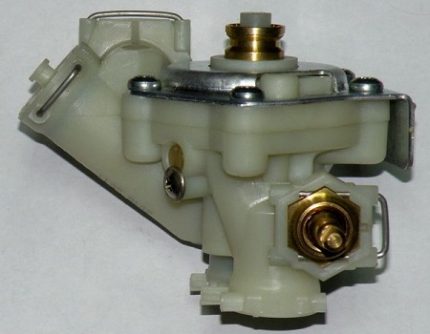
Unscrew the screws of the WU fastening with a cross-head screwdriver. They are located at the bottom of the structure. There is no need to completely unscrew them. After that, the water block is at the disposal of the owner. It can be inspected, cleaned, consumables replaced (the coarse filter mesh can be cleaned without removing the WU).
There are much more consumables in such a frog than in the gearbox of the Neva Group of Companies. Firstly, the water block itself is made of plastic, the fixing screws are screwed directly into the plastic (without brass inserts). The connection is not designed for many assembly-disassembly cycles. If there is a leak on the stem of the control unit, you will need to change the cover completely (maximum life of 2-3 years).
Secondly, in addition to the functions described above, it additionally regulates the amount of water flowing through the column, therefore, at the outlet of the hot water tap, a stable liquid temperature is maintained.

To adjust the water flow, the lower part of the frog is equipped with additionaloverflow channels, a crane box, a mechanical regulator of the flow of water. If the brass axle box has soured, it is replaced with a new one. The diaphragm for replacement will need to acquire a "native". All partsbrand water heaters are expensive. It happens that it will be cheaper pick up and buy a new columnthan to find the right node and wait for its delivery and installation.
Can I do with a diaphragm repair?
Home craftsmen could not miss the opportunity to try to repair a leaky rubber part.
Practitioners have tried the following methods:
- applying patches with various adhesives;
- puttying the surface of the diaphragm with silicone sealant;
- application of silicone compoundPentelast.
Experience has shown that such measures will not help for long, perhaps only for a day or two, since the membrane is working in a tense mode. A new failure of it can aggravate the situation. Therefore, it is not worth resorting to gluing and patching the gaskets.
Conclusions and useful video on the topic
How to replace the diaphragm in the Bosch column, see the following video:
Features of replacing the diaphragm in the water block of the Neva column:
Replacing the membrane is quite within the power of home craftsmen. The article gives detailed instructions, following which beginners can understand the principle of the water reducer, as well as replace the membrane in common models of columns with their own hands. If you doubt your own abilities, then it is better to call the wizard to diagnose the breakdown and eliminate it.
Want to share your own membrane replacement experience with other users? Tell us about the difficulties that you had to face in the process, add unique photos, your experience will be interesting to many beginners. Write your recommendations for replacing the membrane and disassembling / assembling the water assembly - the comment form is located below.

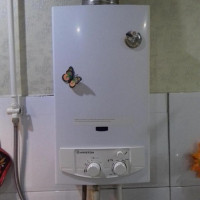 The principle of operation of a gas column: features of the device and operation of a gas water heater
The principle of operation of a gas column: features of the device and operation of a gas water heater  Thermocouple for a gas column: design and principle of operation + self-inspection and replacement
Thermocouple for a gas column: design and principle of operation + self-inspection and replacement 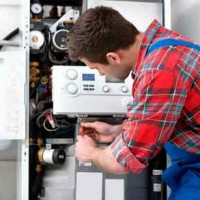 How to replace the gas column membrane: reasons + repair instructions
How to replace the gas column membrane: reasons + repair instructions 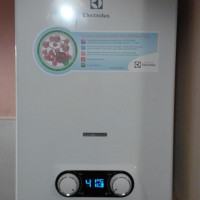 Electrolux Geyser Troubleshooting: Diagnosing Popular Breakdowns and Troubleshooting
Electrolux Geyser Troubleshooting: Diagnosing Popular Breakdowns and Troubleshooting 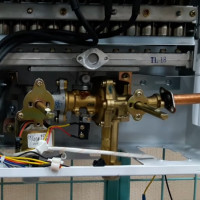 Repair of a water column of a geyser: assembly of a node, major breakdowns and detailed instructions for repair
Repair of a water column of a geyser: assembly of a node, major breakdowns and detailed instructions for repair 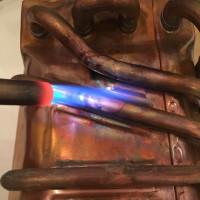 Do-it-yourself repair of a gas column heat exchanger: the main stages of soldering a copper radiator
Do-it-yourself repair of a gas column heat exchanger: the main stages of soldering a copper radiator  How much does it cost to connect gas to a private house: the price of organizing gas supply
How much does it cost to connect gas to a private house: the price of organizing gas supply  The best washing machines with dryer: model rating and customer tips
The best washing machines with dryer: model rating and customer tips  What is the color temperature of light and the nuances of choosing the temperature of the lamps to suit your needs
What is the color temperature of light and the nuances of choosing the temperature of the lamps to suit your needs  Replacement of a geyser in an apartment: replacement paperwork + basic norms and requirements
Replacement of a geyser in an apartment: replacement paperwork + basic norms and requirements